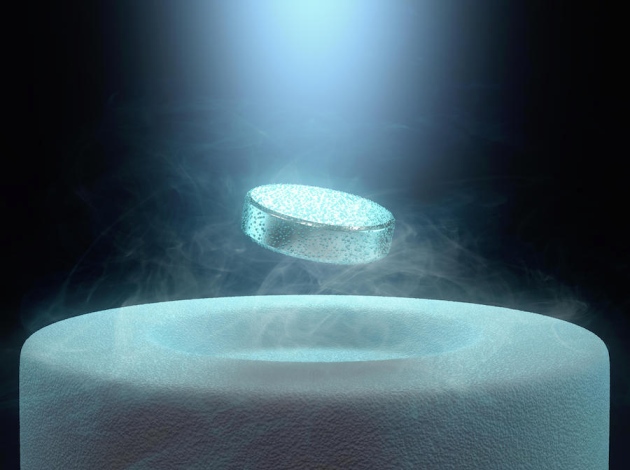Smelly superconductor operates at -70 ° C

Scientists have achieved superconductivity at a record high temperature: 203 K, or -70 ° C. To do this, they used H 2 S - hydrogen sulfide , known to us, in particular, by the smell of rotten eggs. The catch is that this gas becomes superconducting only when it is compressed to gigantic pressures of 100 GPa.
Scientists from the Max Planck Institute of Chemistry in Germany (Mikhail Eremets, Alexander Drozdov and others) had to construct a special chamber to achieve such pressures. Two diamonds provide compression in it, and the electrodes are made of titanium with a gold coating.
Solid-state physics has long sought to create a superconductor operating at room temperature. Such material can give impetus to a new round of technological progress. Unfortunately, finding the right material was very difficult.
Prior to experiments with hydrogen sulfide, good results were shown by copper-based superconductors, which operated at temperatures of the order of 133 K at atmospheric pressure and reached temperatures of 164 K at high. But all theoretical calculations indicate that a metal obtained from hydrogen would be an ideal superconductor. Unfortunately, it is extremely difficult to obtain such a metal. But you can try to get a metal based on hydrogen compounds.
At this stage of the research, practice slightly overtakes the theory - it is not entirely clear what happens in a tiny piece of the sample undergoing such gigantic pressure. Perhaps, H 2 S turns into H 3 S. But it turns into a superconductor quite precisely. In the 2014 experiments with hydrogen sulfide, a team of scientists managed to reach a temperature of 190 K, but now this figure has been raised by 13 degrees - up to 203 K.
Naturally, it is too early to speak about any practical applications of this experiment. Temperatures of -70 ° C are found on our planet in a natural environment, but a pressure of 100 GPa is outside the scope of real technology. Nevertheless, the very fact of the attainability of such temperature indicators inspires scientists to new searches and experiments. The next candidates for hydrogen compounds in search of the ideal superconductor are platinum, potassium, selenium and tellurium.
